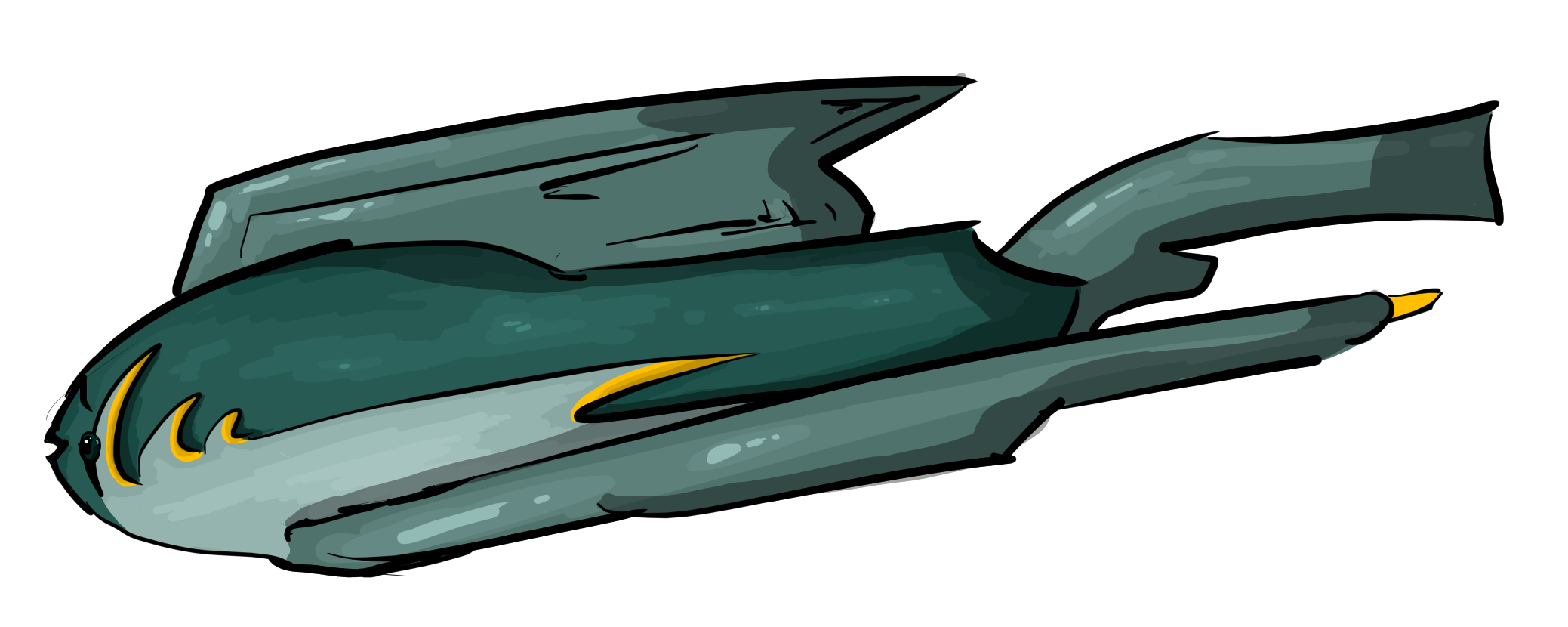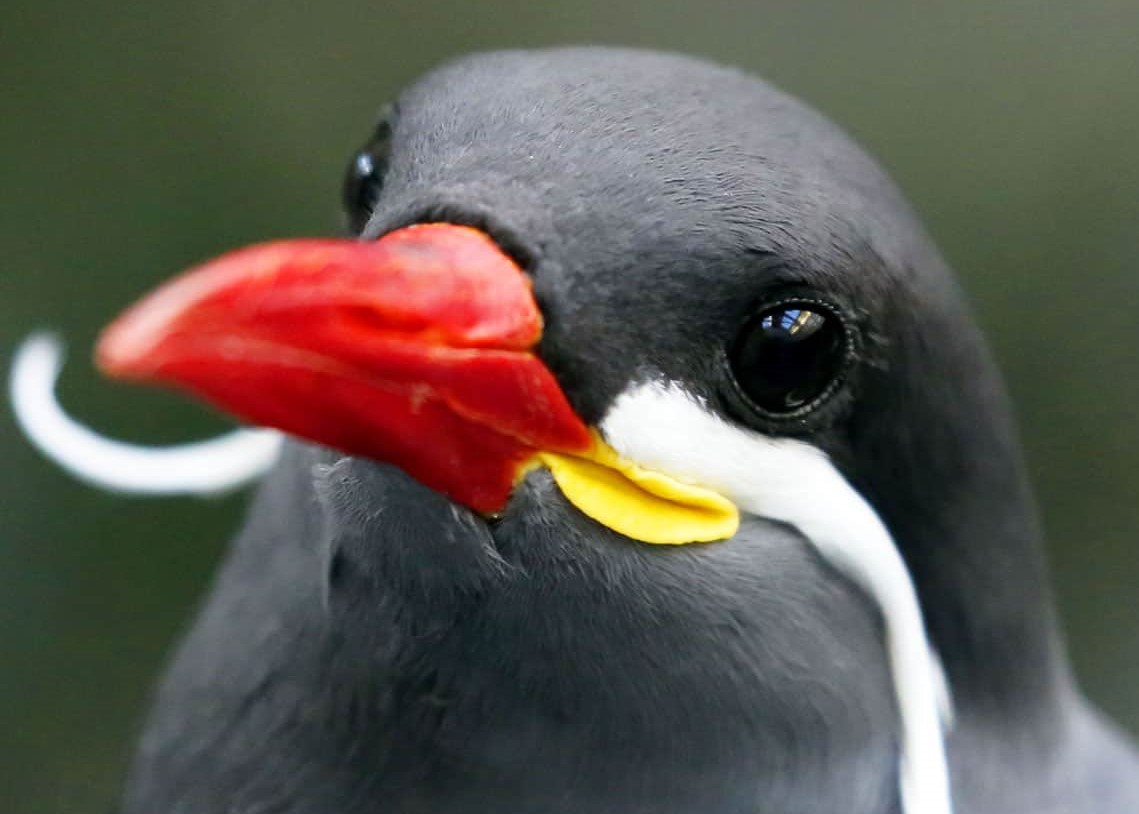Kyrophis
Kyrophis is a planet in the Cheem System, one of nineteen. This planet is home to a hyper-advanced species of squid, perfecting space travel just several hundred years after their evolution. Kyrophis' surface is >99% water, with just a handful of small islands dotted around the Equator.
This planet has become a hotspot and oasis for a number of organisms inhabiting space. Kyrophis' natural auroras are packed full of nutrients that many space organisms struggle to obtain.
Geography, Location & Climate
There are many gorgeous sights to behold on Kyrophis; from the purple volcanoes of the Severed Creek to the Ichthys Islands along the Equator, there is no shortage of interesting and beautiful locations explored by the native kephalons. Kyrophis is divided into seven different oceans, each with slightly varying climates.
Novem Ocean
The Novem Ocean is the most inhabited by kephalons, with a population of about three billion. The Novem Ocean is also the warmest, with average surface temperatures at around 31 degrees Celsius. Tropical storms are common, raging on above the waters while life is peaceful below the rolling waves.
The ocean's largest city, Tempus, sits atop a gigantic chromus turtle. This magnificent creature's shell is a mile and a half in diameter, and she has been alive for over three thousand years.
Tentus Ocean
The southernmost ocean, the Tentus Ocean's surface is dominated by glaciers. With no dry land in sight, the only thing holding this supermassive landmass is a bit of hope, and lots of ice and sub-zero temperatures. The waters below are infested with non-native kelp species, arrived on the backs of kephalon settlements from the Crinnii Ocean, the northernmost ocean.
Crinnii Ocean
The Crinnii Ocean is known for its destructive behaviour, as many of its native species have made its way to the Tentus Ocean around the South Pole. The seabeds are coated in thick algae, seaweeds, and kelps, with vast, ocean-wide ecosystems that display a lack of variety and diversity.
Most stationary settlements and civilisations on Kyrophis are found here, as the native peoples enjoy the lack of diversity in environments, enabling them to go about their lives with little surprise.
Yureta Ocean
The Yureta Ocean is the smallest ocean, with an average depth of 2,405 metres. In the very centre of this ocean is a canyon that extends down another thousand metres. This canyon is the site of one of few stationary kephalon settlements.
These people much prefer their mobile lifestyles, cities adorned on the backs of whatever titanic creature they can get a hold of. Instead, this canyon serves as a hub for interplanetary travellers, who aren't comfortable sitting on top of a massive animal, thousands of years old.
Teuthis Ocean
The nesting site of all the mega cephalopods on Kyrophis, the Teuthis Ocean is just a mass of tentacles in the summers. The ocean is so full of dangerous, horny squids that any kephalon cities migrate outside the ocean that want to mate with their captive megasquids.
As much fun as that might sound, the Teuthis Ocean is almost unnavigable and uninhabitable during the middle months of the year. The squids of Kyrophis are particularly aggressive during breeding season, violently protective of their long strings of eggs.
Myopsi Ocean
The Myopsi Ocean features many sprawling tropical and deepwater coral reefs. These reefs have fluorished in the last thousand or so years, having benefitted from kephalon migrations which has brought about new species to the area. In any other circumstance this would have killed off the coral reefs, but for some reason it has done the opposite.
Almost 80% of all life on Kyrophis can be found in the Myopsi Ocean, a testament to just how ecologically diverse it is.
Nautila Ocean
The Nautila Ocean is best known for, and named after, its abundance of nautilus species. The Nautilidae family fluorishes on Kyrophis, with at least two thousand species named, and more discovered each year. Wrapping around most of the Equator, every island on Kyrophis can be found in this ocean.
Kephalons can survive on land for short periods of time, which has enabled them to explore many of these islands. They also serve as landing points for spacecrafts.
History
Kyrophis' history with the Yonderverse is rather short and sweet. Kyrophis spawned in the Yonderverse 1,852 years ago. The native kephalons were already a hyper-advanced species, having developed space-faring technology just two years after their planet appeared in this world. According to several sources, whatever lied outside of Kyrophis in the kephalon's previous world was completely uninhabitable, and they could never explore it.
Despite easily being one of the most intelligent species in the Yonderverse, the kephalons have no plans for world domination, which is quite nice. The Kyrophis Space Legion exists purely as a show of support and friendliness to the outside world. Not a single law or legislation has been passed by this Space Legion, and the current Head Legional, Naven Cirrina, has stated that this Legion has no desire for writing future legislations.
Ecology
Much of the wildlife of Kyrophis, especially larger organisms, are cephalopods of some kind. As previously started, nautili and squids are of abundance. Cuttlefish and octopuses are indeed common species too, but slightly rarer. Superspecies are common on Kyrophis - the size of the planet's oceans give space for truly monstrous creatures to evolve.
Kyrophis' Superspecies
Due to the size and depths of Kyrophis' oceans, superspecies are abundant. Some species grow over a mile in length or diameter, such as spire squids and chromus turtles. These animals form their own ecosystems, many hosting plant and protist species on their bodies, which too are inhabited by smaller animals such as cutoolis, fast-swimming fish that enjoy the company of a giant chromus turtle.
Surface Species
The oceans of Kyrophis are not the only inahabited regions. The few islands and the skies are also bustling with life. Many semi-aquatic crustacean species can be found on the islands, gathering in swarms of millions. They are preyed upon by a number of small mammal species, isolated on individual islands, leading to drastic adapations to suit their unique environments.
Bird species are very common on Kyrophis. Over two hundred marine bird species spend the majority of their lives out at sea, flying high above the water, diving down only when food is spotted. Most birds don't stray more than a few miles from islands, others adapting to a completely air-based lifestyle - sleeping, mating, and even giving birth in the air. Driftwood squids, a marine species found in open waters, have the ability to fly for short distances.
The wildlife here is breathtaking. I struggled to take in just how diverse each biome is. I first landed on a little island around the Equator with a number of interesting organisms. My favourite were these peculiar little grasshopper-like insects, almost a foot long and produce this gorgeous melody.
3
Distance From Sun
5.9 AU
Space Legion
Kyrophis Space Legion
3
Significant Natural Satellites
Coluda, Hisuti, Vandar











Let me get this out of the way: HORNY SQUIDS. I love the sound of this planet, and the diversity of its oceans. I like the one that has lots of nautilus species the most. :D
Explore Etrea | March of 31 Tales
Thank you so much! Excited to do more ocean planet worldbuilding :D